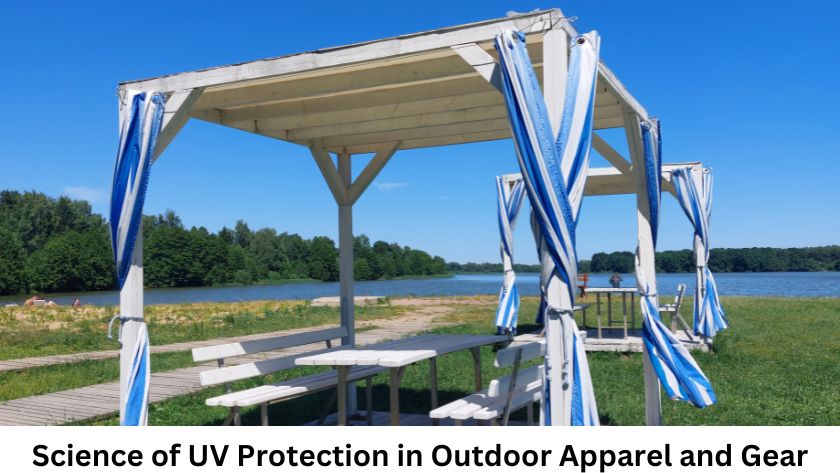The Science of UV Protection in Outdoor Apparel and Gear

In recent years, there’s been a growing awareness of the harmful effects of ultraviolet (UV) radiation on our skin and eyes during outdoor activities. Whether you’re hiking in the mountains, lounging on the beach, or simply enjoying a picnic in the park, the sun’s rays can cause significant damage over time. This realization has led to an increased demand for UV protective gear for backpackers, travelers, and outdoor enthusiasts alike. It’s not just about avoiding sunburn anymore; it’s about protecting ourselves from the long-term risks of UV exposure.
Understanding UV Protective Gear Technology
Blocking and Absorption
This mechanism involves the integration of chemical treatments into fabrics and materials to create a barrier against UV rays. The technology operates on two fronts: physically reflecting UV rays away from the body, similar to a mirror bouncing light off its surface, and chemically absorbing UV radiation, converting it into harmless heat that is then dissipated. This dual-action approach ensures comprehensive protection from both UVA and UVB rays, which are responsible for causing sunburn, skin cancer, and premature aging of the skin.
Innovations
The field of UV protection has seen significant advancements, with new technologies emerging to improve the efficacy and wearability of sun protective gear. One such innovation is the development of nanoparticle-infused fabrics, which enhance UV absorption without compromising the fabric’s breathability or comfort. Another breakthrough involves the use of photoprotective agents that can be washed into clothes, offering long-lasting UV protection that doesn’t diminish with wear or laundering. These innovations are paving the way for lightweight UV clothing that offers high levels of protection without the bulk.
Comparing UV Protective Gear
With the increasing availability of UV hiking apparel and gear, consumers are faced with various choices. When comparing products across different brands, it’s essential to consider factors such as UPF rating, material durability, and the gear’s adaptability to various environmental conditions. Leading brands often invest in research and development to offer the top UV protective gear, incorporating the latest technologies and materials for maximum protection. Reading reviews and product comparisons can provide valuable insights into the performance and reliability of different brands, helping you make an informed decision based on your specific needs and outdoor activities.
Selecting the Best UV Protective Clothing
Criteria
Choosing the best UV protective clothing involves more than just picking up the first item labeled with a UPF rating. It’s crucial to consider the fabric’s composition, weave, color, and weight. Darker colors tend to absorb more UV rays than lighter shades, offering better protection. Additionally, the weight of the fabric matters; heavier fabrics can offer more protection than lighter ones. However, the challenge lies in balancing these factors with the need for breathability and comfort, especially in warm climates.
Recommended Materials
When considering UV-blocking fabrics, it’s essential to recognize that their effectiveness varies significantly across different materials. For optimal protection against harmful ultraviolet rays, several fabrics are highly recommended for use. These are:
- Polyester: Known for its durability and resistance to UV penetration, making it ideal for a wide range of outdoor gear.
- Nylon: Offers excellent protection and resilience, often used in lightweight and water-resistant clothing.
- Merino Wool: Natural fiber with inherent UV resistance, moisture-wicking, and temperature-regulating properties.
- Bamboo: Provides natural UV protection, along with being soft, breathable, and biodegradable.
- Lycra/Spandex: Often blended with other fibers to add stretch while maintaining protection, perfect for active wear.
- Hemp: A sustainable choice with natural UV-blocking capabilities, becoming increasingly popular in eco-conscious clothing lines.
Each of these materials brings a unique set of benefits to the table, from environmental sustainability to advanced technical performance. When selecting outdoor UV wear, consider the specific conditions and activities you’ll be engaging in to choose the most appropriate fabric.
Sun Protective Gear for Outdoor Adventures
Essential Gear for Hikers
For hikers and backpackers, venturing into the great outdoors requires more than just a good pair of boots; it demands comprehensive protection against the sun’s harmful UV rays. Essential items include UV protective gear for travel such as wide-brimmed hats, long-sleeved shirts, and pants. These items are designed to cover as much skin as possible while providing ventilation and comfort during long treks. Additionally, using accessories like neck gaiters and gloves can offer added protection for areas often exposed to direct sunlight.
Lightweight UV Clothing
When exploring different climates, wearing lightweight UV clothing is key to staying protected without overheating. Advances in fabric technology have led to the creation of garments that are not only light and airy but also highly effective at blocking UV rays. These pieces are particularly valuable for travelers who move between varying weather conditions and need to stay protected without burdening their luggage with heavy clothing.
The Role of Sun Canopies
Beyond clothing, travel sun canopies for camping play a crucial role in providing shelter and UV protection in outdoor settings. These canopies are designed to create areas of shade, offering a haven from direct sunlight for individuals and groups. Ideal for camping, picnics, and beach outings, sun canopies are made from materials that reflect or absorb UV rays, significantly reducing exposure. Modern designs are easy to set up and compact enough to carry on any trip, making them an indispensable part of outdoor gear.
The Critical Role of UV-Blocking Sunglasses
How Sunglasses Protect Your Eyes
Sunglasses serve as a critical barrier against UV rays, shielding the eyes and the delicate skin around them from damage. High-quality sunglasses filter out UVA and UVB rays, preventing them from reaching the eye’s surface and causing conditions such as photokeratitis (sunburn of the eye), cataracts, and macular degeneration. Beyond their functional benefits, sunglasses also reduce glare, improving visibility and comfort in bright conditions.
Key Features
When choosing sunglasses to protect against harmful UV rays, it’s essential to consider several key features that ensure maximum safety and comfort. Here’s a breakdown of what to look for:
- Polarization: While not related to UV protection, polarized lenses reduce glare from reflective surfaces, making them ideal for water sports and driving.
- Wraparound Style: This design offers better side protection, blocking rays that might enter around the edges of standard frames.
- Lens Material: Polycarbonate lenses are impact-resistant, making them suitable for sports and active use. Optical quality lenses provide clearer vision and are less likely to distort shapes and details.
- Frame Quality: Durable frames that fit well will ensure that your sunglasses stay in place and provide protection consistently.
Selecting sunglasses that meet these criteria can significantly enhance eye protection during outdoor activities. Moreover, investing in a pair of high-quality sunglasses not only protects your health but can also be a style statement, complementing your outdoor gear while ensuring your eyes are safeguarded against UV damage.
The evolution of UV-blocking fabrics and the increasing variety of sun protective gear available on the market are testaments to the outdoor industry’s commitment to safety and innovation. As adventurers and travelers, we have a wealth of options at our disposal to keep us safe under the sun. By making informed choices and prioritizing protection, we can enjoy the beauty and thrill of the outdoors without compromise. The journey doesn’t end here; it’s an ongoing process of learning and adaptation as we continue to explore the vast and sun-drenched world around us.




